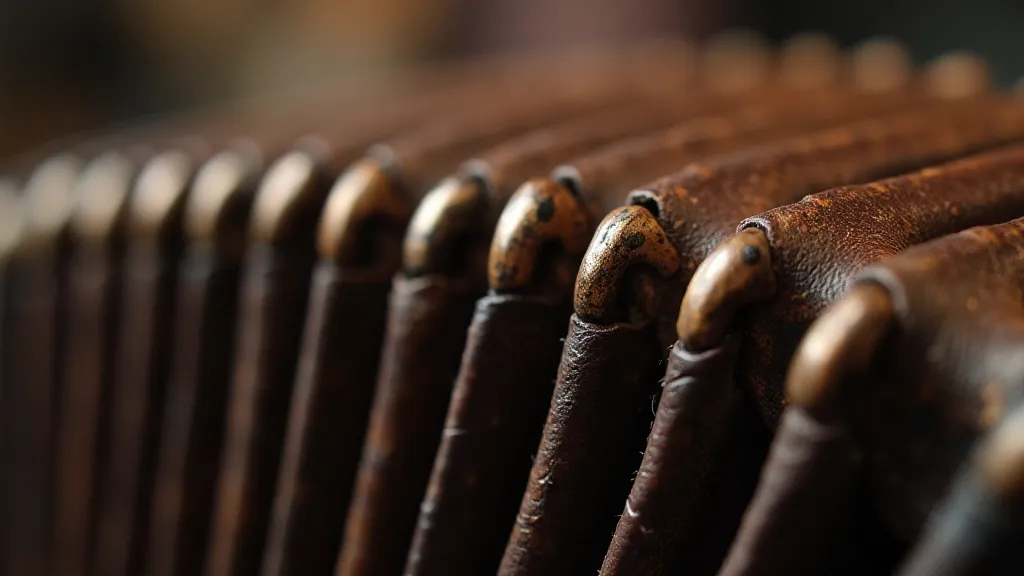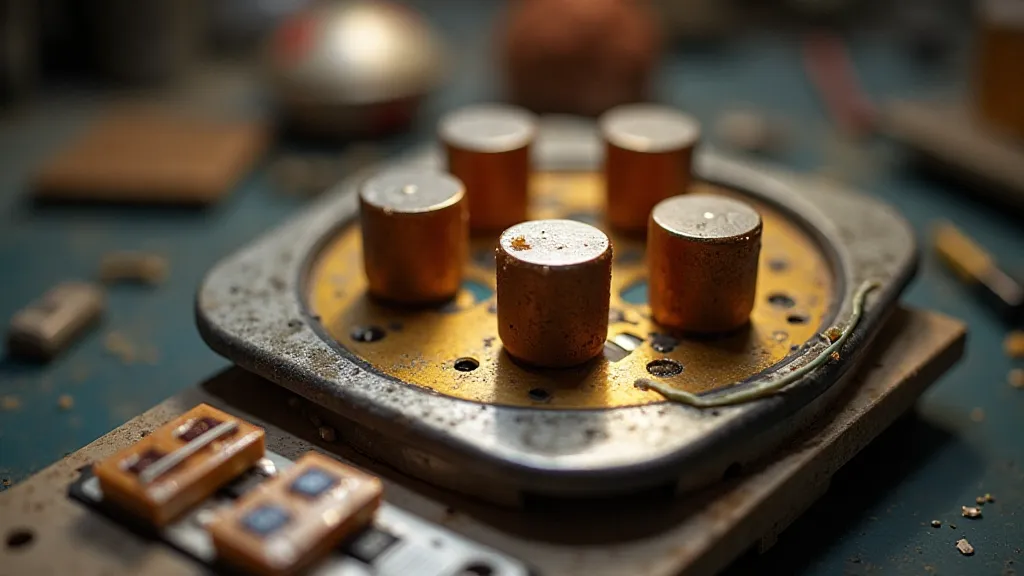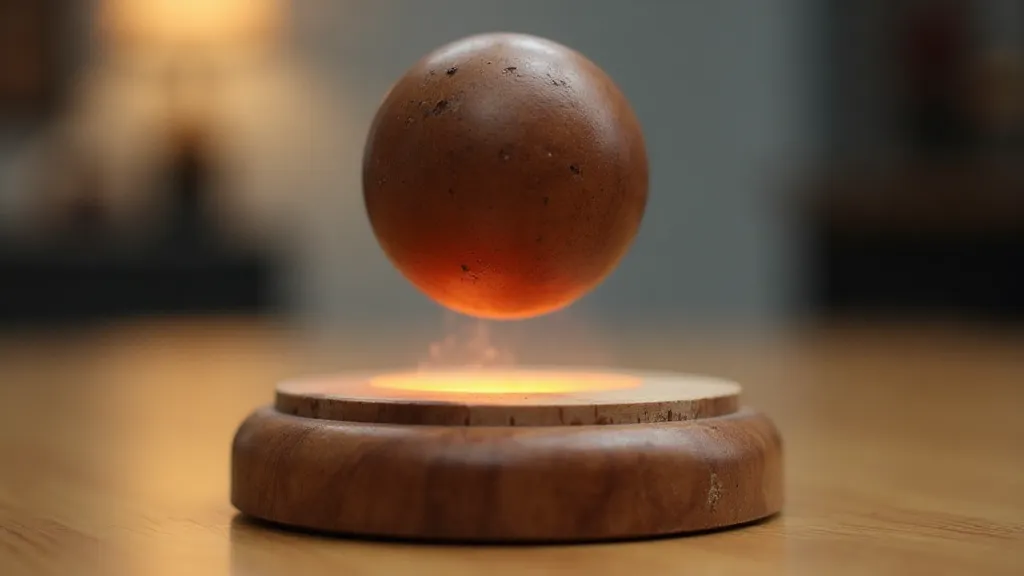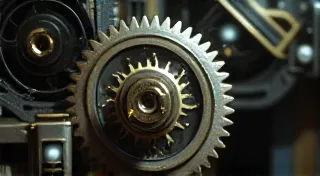Levitating Echoes: Choreographing Magnetic Suspension
There's a peculiar magic to old accordions. Not the boisterous, polka-driven kind, but the quiet, contemplative ones – those that have seen decades of music, laughter, and perhaps, a few tears. I remember my grandfather’s, a Hohner from the 1930s, its bellows worn soft, its keys bearing the patina of countless performances. Each press released a melancholic sigh, a whisper of a past I could only imagine. It wasn’t just an instrument; it was a portal to another time, a tangible link to the stories held within its wooden frame.
That sense of captured history, of graceful movement and enduring craftsmanship, is precisely what I feel when I contemplate magnetic levitation. It's a pursuit that blends science and artistry, demanding precision, patience, and a deep appreciation for the delicate balance of forces. While the physics might seem complex, the resulting visual poetry – an object suspended in mid-air – is surprisingly evocative, mirroring that feeling of timeless elegance found in a perfectly restored antique accordion.

The Allure of Suspension: Why Rare Earth Magnets?
The journey to creating a stable levitating object isn't simple. Historically, demonstrations of magnetic levitation used relatively weak magnets, resulting in incredibly unstable setups. Rare earth magnets – specifically neodymium magnets – changed the game. Their intense magnetic field strength allows for significantly more powerful and controllable levitation forces. This isn’t just about defying gravity; it's about harnessing invisible forces to create a mesmerizing display.
Consider the early attempts at magnetic levitation – clumsy, reliant on constant adjustment, prone to sudden collapses. Now, thanks to advances in magnet technology, we can achieve relatively stable and aesthetically pleasing levitation setups. This leap in capability opened up a whole new realm of possibilities for artistic and scientific exploration. It's akin to the shift from early, cumbersome photography to the modern digital imaging we enjoy today; a world of potential unlocked by technological refinement.
Understanding the Principles: Attraction, Repulsion, and Stability
The basic principle of magnetic levitation relies on the interplay of attractive and repulsive forces. A simple system might involve a magnet positioned below a levitating object and another magnet on the object itself, repelling the lower magnet and creating lift. However, simply arranging magnets in this way rarely results in stable levitation. The object will likely wobble and drift.
The challenge lies in achieving equilibrium. If the object moves slightly, the repulsive force needs to adjust automatically to counteract the movement and return it to its central position. This is where things get tricky and require sophisticated feedback systems, often involving electromagnets and control circuits. Simpler, albeit less robust, methods can utilize carefully arranged magnets and precisely calibrated weights to create a degree of self-stabilization, although maintaining true stability is rarely achievable with purely static magnetic arrangements.
Think about the intricate mechanisms within an accordion. Each reed vibrates according to its design, each button triggers a precise action. The entire structure is a testament to the careful orchestration of numerous small movements. Achieving stable magnetic levitation demands a similar level of detailed consideration, a focus on subtle adjustments and the understanding of interacting forces.
Practical Challenges and Design Considerations
Building a levitating project isn’t just about slapping magnets together. Several challenges need addressing. First, magnetic forces are unforgiving. Even slight misalignments can lead to instability. Second, the system is highly sensitive to external factors like vibrations and air currents. Third, aesthetics matter. A technically functional levitator can still be jarring if it's not visually appealing.
When designing a levitation project, consider the following: the shape and weight distribution of the levitating object, the strength and arrangement of the magnets, the overall aesthetic, and the potential for interference from external forces. For instance, a heavier object will require stronger magnets and a more robust stabilization system. The shape of the object will impact its stability; a symmetrical object is generally easier to balance than an asymmetrical one.
Often, the most satisfying levitation projects are those that seamlessly integrate the technology with the design. Think of the careful carving and finishing work involved in restoring an old accordion. Every detail is considered, not just for functionality but for the overall beauty of the instrument. The same principle applies to magnetic levitation; it's about creating a harmonious blend of science and art.

Beyond the Basics: Electromagnets and Feedback Systems
While static magnetic levitation offers a degree of visual appeal, the real magic happens when you introduce electromagnets and feedback systems. Electromagnets allow for dynamic control of the magnetic field, allowing you to adjust the levitation force in real-time. This opens up possibilities for creating truly interactive and mesmerizing displays.
Feedback systems, typically involving sensors and microcontrollers, constantly monitor the position of the levitating object and adjust the electromagnet’s current accordingly. This creates a closed-loop system that actively stabilizes the object, compensating for disturbances and maintaining a consistent levitation height. The sophistication needed to build such a system parallels the intricate manufacturing process of a high-end accordion; demanding precision, expertise, and a relentless pursuit of perfection.
Aesthetic Design and the Illusion of Effortlessness
Ultimately, a successful magnetic levitation project is more than just a demonstration of scientific principles; it’s a work of art. The illusion of effortless suspension is key. The viewer shouldn't be aware of the underlying technology; they should simply be captivated by the beauty of the floating object.
Consider the way an accordion player makes their instrument seem like an extension of their body, effortlessly drawing melodies from its strings. A well-designed levitation project aims for a similar effect – an impression of grace, simplicity, and a deep connection between the object and its environment. The imperfections of older instruments, the subtle signs of wear and the inherent imperfections of hand-crafted items, contribute to their character and charm. In a similar way, a touch of subtlety in a magnetic levitation project, avoiding overly-engineered or overtly technical designs, can amplify its aesthetic appeal.

Safety Considerations: A Note of Caution
Working with strong magnets requires caution. Neodymium magnets are incredibly powerful and can pinch fingers, damage electronic devices, and interfere with medical implants. Always handle magnets with care, keep them away from children and individuals with medical implants, and store them safely when not in use. The respect for potential hazards mirrors the understanding of the delicate intricacies involved in the restoration and maintenance of an antique accordion; acknowledging the power of the instrument and handling it with appropriate care.





